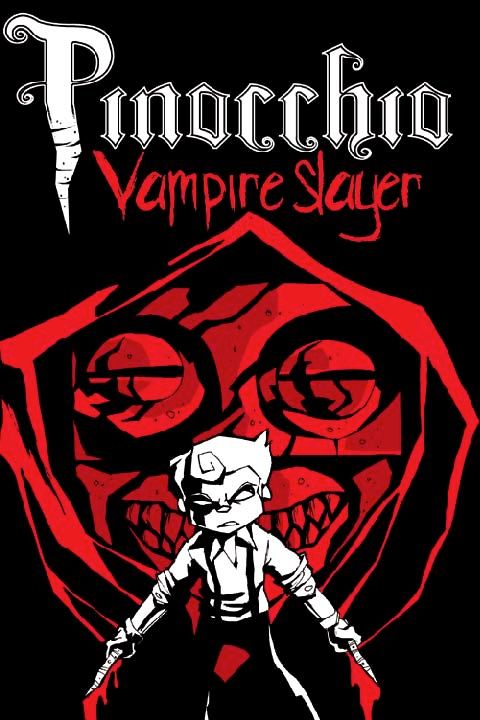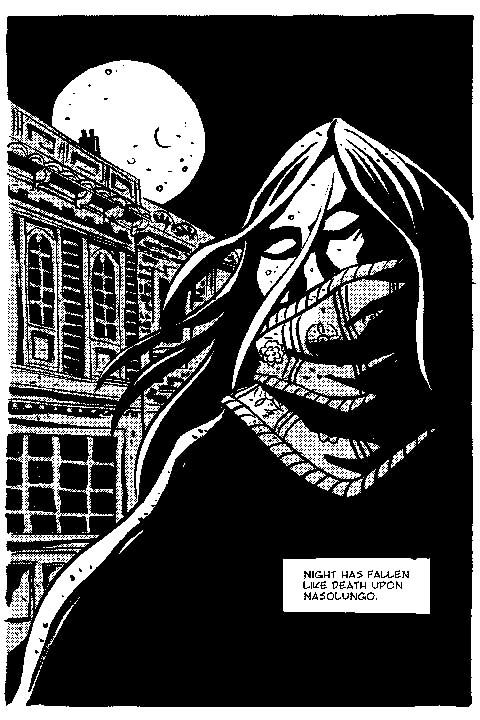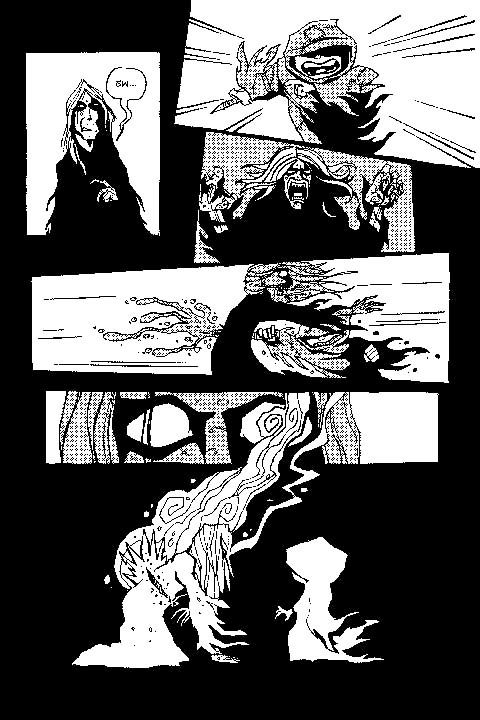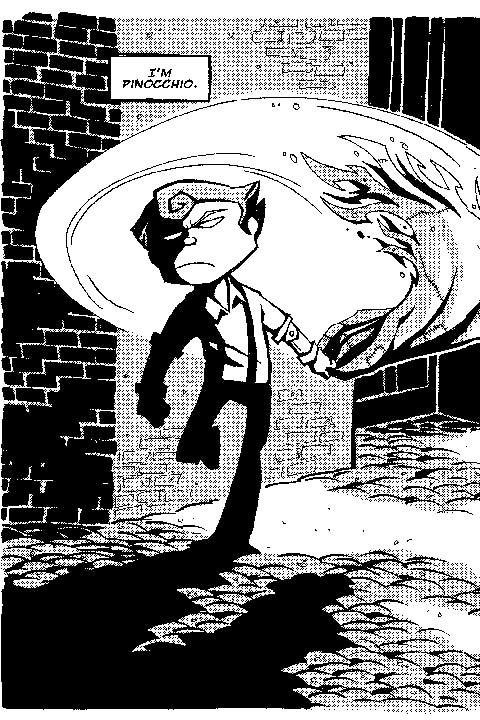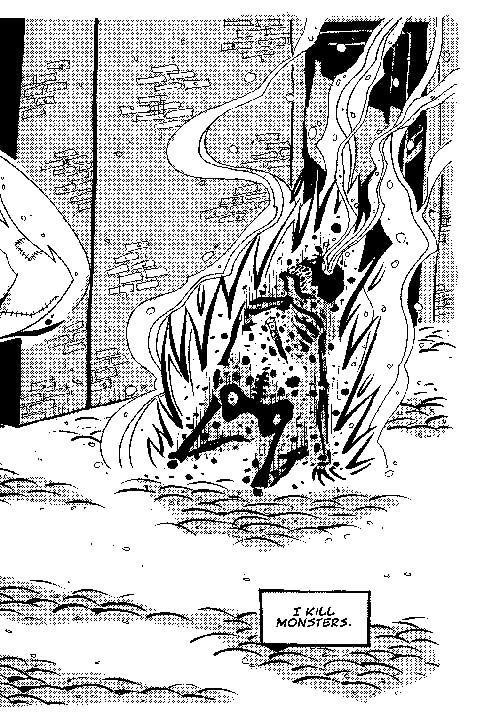You might recognize Van Jensen's name from his work for various comics news outlets -- Publishers Weekly, Comic Foundry, ComicMix and even right here at Comic Book Resources. He's also been working with Top Shelf recently on their Kindle initiative, which was recently unveiled at HeroesCon.
In addition to all this, he's also about to make his break into comics with Pinocchio: Vampire Slayer by SLG Publishing. Created by artist Dustin Higgins, it's the story of what happens after vampires kill Gepetto and the little wooden boy swears revenge. Armed with a pack of lies and his ever-growing nose, he ends up being humanity's last hope against enslavement by the monsters.
I spoke with Jensen about the book, where the "Why didn't I think of that" idea came from and what kinds of vampires we can expect to find in the book.
JK: I have to get this out of the way first -- do the vampires sparkle in your book? Because we may just have to end this right here and now, depending on your answer ...
Van: I actually had to Google "vampire sparkle." I haven't read any Twilight books, but they sound really, really weird. Honestly, I don't care for vampires that much as they're normally represented in fiction. Our vampires are a lot closer to the original ones in Middle Age European folk tales and rumors -- gross corpses with a full mouth of jagged teeth.
JK: So you're kind of going against the "pretty boy" vampire trend we've seen in Twilight, True Blood, Buffy, etc.?
Van: That trend traces all the way back to Bram Stoker, who recast an old folktale villain into a more Victorian character. It's not that I oppose it, necessarily, but that version of vampires has been done time and again, to the point there's not a lot of fresh ground. My nature is always to take an idea and spin it against the grain, so that's where my reinvention of vampires comes from.
JK: People keep commenting on the “high concept” of the book. In fact, here’s what my fellow blogger Kevin Melrose said about it back when you first announced it:
“There’s such a wonderfully simple internal logic to a story about a wooden boy who battles the undead that I almost can’t believe no one has come up with Pinocchio: Vampire Slayer before now.”
When did you and Dustin have the “big idea,” and when did you realize it was something you could turn into a graphic novel pitch?
Van: Dusty gets all the credit for the concept. He and I worked at the same newspaper, and one day he sketched a sort of "bad Pinocchio" who had stabbed a cop with his nose. That quickly led to Pinocchio stabbing a vampire. I had mostly forgotten about it after moving from Little Rock (where Dusty still lives) to Atlanta, and he called me out of the blue and asked if I wanted to script a graphic novel based on the concept. Of course I said, "Hell yes," because I knew right away there was strong potential for a book.
It's interesting to hear it called "high concept." To me it's a one-off joke as an idea, and the challenge for Dusty and I lay in building a credible story and an interesting character out of Pinocchio. We actually created a whole mythology based on the original Carlo Collodi fairy tale that, if the first book sells, we'll explore in two more books.
JK: It sounds like you put a lot research into the book. What did you find compelling about the original Pinocchio story?
Van: There's very little that isn't compelling. It starts out, "There was once upon a time a piece of wood..." It's just such a strange, funny story. Like most fairy tales of that era, it was later stripped down and recast as a simple moral lesson, and it lost all of its weirdness and texture. And Collodi's Pinocchio is kind of a rotten kid, which also is a lot of fun.
JK: Will we see other characters from the Pinocchio story, such as the Blue Fairy, Monstro or (heh) Jiminy Cricket. Seriously, I believe there was an unnamed cricket in the original story).
Van: The fairy is a major character in the story, as magic plays a big role. No Monstro. I think he's just a giant nameless fish in the original. And the cricket also plays a big role, though he also doesn't have a name. His character is a great example of Disney's changes. Collodi actually has Pinocchio smash the cricket and kill him, and then the cricket's ghost later returns as a friend. And our version continues that, so we have a ghost cricket floating around and offering Pinocchio advice. To me, that's way more interesting.
JK: And I was going to ask about potential followups. After slaying vampires, what else do you have in mind for Pinocchio?
Van: Who's to say all the vampires are dead after the first one? Dusty and I actually just sat down and plotted out the next book, and it has some really cool stuff. Epic battles, pirates, etc. So, if you want to see it, go buy the book, everyone!
Beyond Pinocchio, I'm putting more of Top Shelf's books on the Amazon Kindle, then I'm writing a crime noir graphic novel that's in the vein of L.A. Confidential and am looking for an artist on a graphic novel I wrote last year that features the disembodied leg of Santa Anna adventuring around 1930s Mexico.
JK: So give me a little more information on your background. You’re a newspaper guy, right?
Van: Yep. Journalism degree from Nebraska, editor of the college paper, won a few writing awards along the way. I spent three years in Little Rock, Ark., as a crime reporter, covering homicides and such in the middle of the night in the wrong part of town. At the same time, I was asked by the features editor to write a comics column, because he knew I had some interest. I got out of newspapers when my wife and I moved to Atlanta but kept writing about comics for CBR and elsewhere.
JK: Did your journalism background help with the book? For instance, what was the pitching process like? Had you spoken with anyone at SLG before in your work as a comics journalist?
Van: The pitching process was pretty interesting. We made a mini-comic of the first 10 pages of the book, and I took it to Heroes Con in 2008. Todd Dezago got a copy, loved it, and then he passed it around to friends, including Mark Waid, telling him that BOOM! Studios should publish it. The trouble was, I was covering BOOM! for Publishers Weekly, so that put me in a pretty unethical situation. I talked to BOOM! publisher Ross Richie, and he said, "Send that to Slave Labor. I promise you they'll publish it." So Dusty and I went through the normal pitch process at SLG, and sure enough, they loved it! But before that, I'm pretty sure no one at SLG knew who I was.
Now, a different answer to the same question: Journalism is really helpful as a fiction writer in that it teaches you how to report, which in short means learning everything you can about a subject and distilling that knowledge. Pinocchio didn't require quite as much of that, but I still did a lot of research into the original fairy tale and the origins of the vampire mythos.
JK: When it came time to write the script, how did you approach it? Did you provide a full script to Dustin, or was it more fluid than that? And was it difficult to make the switch to writing a script after so many years of writing articles?
Van: Right after we talked about doing the book, I had outlined the book but couldn't figure out the intro. Then the first 10 pages came to me in a flash, and I jotted down a quick synopsis with the monologue and dialogue. Dusty turned right around and put together 10 awesome pages just from that. At that point, I realized he didn't need too much direction, so I hammered out a pretty tight script in about three weeks (I write pretty fast). From there, we did some revision as we went.
Throughout the process, my goal was to make Dusty happy and allow him to showcase his talent, since it's his creation, so we worked very collaboratively.
Scripting really wasn't a challenge. Pinocchio is actually the third piece of long fiction I've written. I wrote a novel in 2005 and another graphic novel script in 2007 (both unpublished) and lots of short stories. That said, they are very different types of writing, and the only thing that translates is dialogue. As a journalist, you really get in tune with how people talk.
JK: And what’s it like being on the other side of the interview, as it appears you've done a few now on the book?
Van: It's pretty fun, I've got to be honest. I love making comics, and I'm really excited and humbled by having people interested in my writing. At Heroes Con this year, a few people asked me to autograph the Pinocchio preview books I'd brought, and I barely held back from saying, "Really? You want ME to sign that?"


